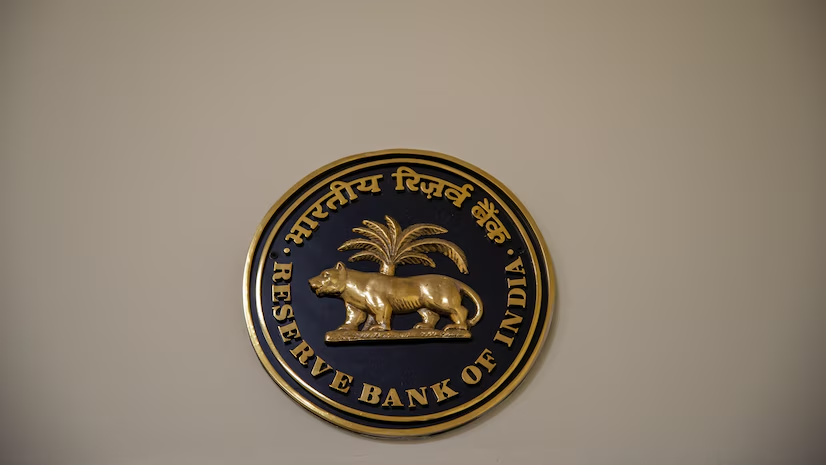India’s gold loan market, once a relatively under-regulated space that provided quick financial relief to millions, is facing its most significant transformation yet. The Reserve Bank of India (RBI) has issued a new set of stringent regulations aimed at tightening oversight on gold-backed loans. This is a major step to address the growing concerns over transparency, security, and the fair valuation of gold, which have been longstanding issues in the sector. The new directives not only aim to protect consumers but also seek to restore integrity in a rapidly growing financial market.
The Growth of the Gold Loan Market: A Double-Edged Sword
Gold loans have been a reliable financial tool for millions of individuals across India, especially in rural and semi-urban regions. The appeal of gold-backed loans is simple: they allow individuals to pledge their gold jewelry or other precious items as collateral in exchange for quick access to cash. The process is less complicated than traditional loans, with fewer requirements for documentation or credit history, making it ideal for individuals who are either self-employed or lack access to regular banking services.
As the demand for gold loans has surged, so too have the number of players in the market, from large national banks to smaller Non-Banking Financial Companies (NBFCs). With rising gold prices, the sector has experienced substantial growth. However, this rapid expansion has also been accompanied by increasing concerns about the safety, security, and fairness of the loans being provided. This is where the RBI’s new regulations come into play.
Key Issues Leading to the RBI’s Intervention
The RBI’s decision to impose tighter controls follows an extensive review of gold loan practices, which uncovered several key issues. These include a lack of adequate monitoring, over-reliance on third-party vendors, and insufficient transparency in loan practices. Below are the critical concerns that the RBI has sought to address:
1. Over-Reliance on Third-Party Vendors
One of the primary findings of the RBI's review was the heavy dependence on third-party vendors for critical services like loan sourcing, gold valuation, and KYC (Know Your Customer) compliance. This system, while efficient in some cases, has led to lapses in oversight. Many third-party service providers are not always held to the same standards as the financial institutions themselves, leading to potential issues such as inadequate gold valuations or improper documentation.
In particular, the RBI discovered that gold appraisers often did not conduct proper valuations in the presence of the customer, raising concerns over the fairness of the loan amounts being offered. By mandating more direct oversight of third-party vendors, the RBI aims to ensure that these functions are carried out with greater transparency and accountability.
2. Loan-to-Value (LTV) Ratio Irregularities
The Loan-to-Value (LTV) ratio is a critical metric in the gold loan industry, indicating the amount of loan a borrower can get against the value of the gold pledged. For example, the LTV ratio for gold loans typically ranges from 60% to 90%, depending on the lender’s policies and the gold’s value. However, the RBI's review found that many institutions were not adequately monitoring the LTV ratios. In some cases, loans were being granted that exceeded the prescribed LTV, potentially leaving borrowers with insufficient collateral or making it difficult for them to repay their loans without risking their gold.
This laxity in maintaining the LTV ratio could expose both lenders and borrowers to significant risks, particularly in a volatile market where gold prices can fluctuate rapidly. To prevent this, the RBI has now made it mandatory for institutions to closely monitor their LTV ratios, ensuring they remain within safe and transparent limits.
3. Evergreening of Loans: A Growing Concern
Another worrying trend highlighted by the RBI is the practice of “evergreening,” where lenders offer new loans to borrowers in order to pay off existing ones, creating a cycle of debt. This is particularly concerning when the borrower’s financial situation is not adequately assessed before the new loan is granted. The result is often a snowball effect, where borrowers find themselves trapped in an ever-expanding loan cycle, unable to repay their debts.
The RBI has taken strong action against this practice, mandating stricter credit assessments before new loans are granted and ensuring that existing loans are not rolled over indefinitely without proper evaluation. This will help curb the tendency for lenders to extend credit to individuals who may already be financially stretched.
4. Lack of Transparency in Auctioning Gold
Gold loans typically involve the auctioning of the pledged gold if the borrower defaults on the loan. However, the RBI’s investigation revealed a lack of transparency in the auctioning process. In many cases, gold was sold at a price below its market value, which not only affects the lender’s recovery but also leaves the borrower with less than they should rightfully receive from the sale.
The new regulations demand that the auctioning process be more transparent, with the gold being sold at a fair market price. This move is designed to protect the interests of both borrowers and lenders and to ensure that the pledged assets are used responsibly in case of a default.
RBI’s New Regulations: A Comprehensive Framework for Reform
In response to these issues, the RBI has introduced a series of new guidelines that aim to overhaul the gold loan sector. These regulations focus on four key areas:
1. Stricter Monitoring of Third-Party Vendors
Under the new rules, gold loan providers are required to exercise greater control over the third-party vendors they rely on for essential services such as loan sourcing and gold valuation. These vendors will now be subject to the same level of scrutiny as the financial institutions themselves, ensuring that they adhere to high standards of professionalism and transparency.
2. Enhanced Oversight of Loan-to-Value Ratios
Financial institutions will now be required to more closely monitor and control their LTV ratios. The RBI has set clear guidelines on the maximum allowable LTV for gold loans, ensuring that loans are provided in proportion to the true value of the gold pledged. This will prevent over-leveraging and help maintain the financial stability of both borrowers and lenders.
3. Tighter Control Over Loan Rollovers
To prevent the evergreening of loans, the RBI is introducing stricter checks on the rollover process. Before extending new loans to pay off old ones, institutions must assess the borrower’s financial health more thoroughly. This will help prevent customers from falling into a cycle of debt and encourage more responsible borrowing.
4. Transparent Auctioning Process
The RBI has emphasized the importance of a transparent and fair gold auction process in the event of a borrower defaulting. Gold loan providers will be required to follow strict guidelines to ensure that pledged gold is auctioned at market rates. This move is aimed at ensuring that both parties—the borrower and the lender—are treated fairly in the event of default.
Implications for the Gold Loan Industry and Consumers
The RBI’s new regulations represent a major shift in the gold loan sector. For consumers, this is a much-needed intervention to protect their interests. The tighter regulations around gold valuation, the auctioning process, and loan disbursement will help ensure that borrowers are treated fairly and that the gold they pledge is used responsibly.
For financial institutions, these regulations will require a substantial overhaul of their existing systems. The new guidelines will force lenders to be more transparent, diligent, and accountable, ensuring that they uphold the integrity of the gold loan process. Institutions that fail to comply with these regulations could face significant penalties or even suspension of their gold loan operations.
Conclusion: A New Era for Gold Loans
The RBI’s tightening of regulations in the gold loan sector marks a new chapter for the industry. These reforms, while placing greater responsibility on lenders, are designed to protect consumers from unfair practices, ensure fair valuations, and promote greater transparency throughout the loan process. As the sector continues to grow, these changes will help establish a safer, more reliable gold loan market—one that can serve both lenders and borrowers effectively while promoting financial inclusion.
By implementing these sweeping reforms, the RBI is signaling that it will no longer tolerate lax oversight in a sector that touches millions of lives. With the new guidelines in place, gold loan providers will be forced to raise their standards, ensuring that the industry remains both viable and fair for years to come.







